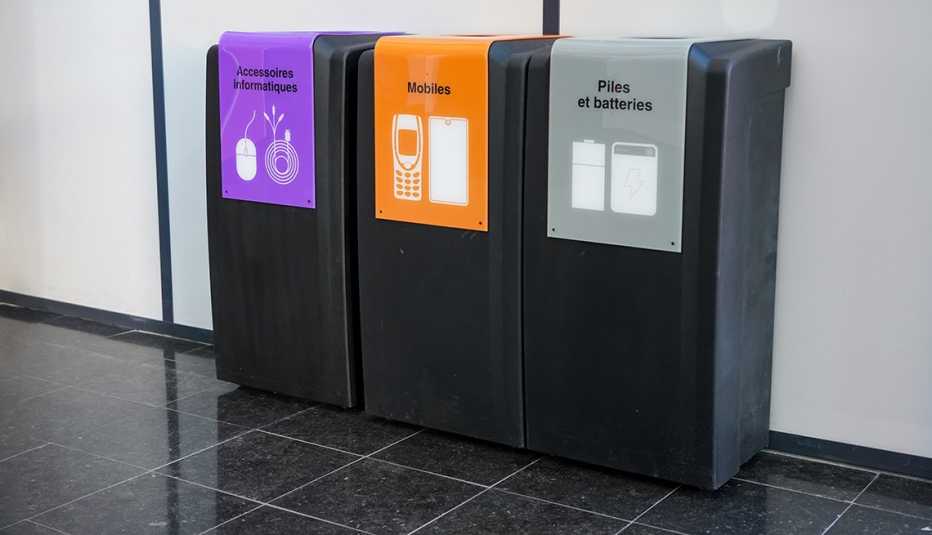AARP Hearing Center


In this story
E-waste epidemic • Toxins in electronics • What’s e-waste? • Proper disposal • Several options • Data removal
The downside of reliance on technology is electronic waste.
The amount of e-waste generated in the United States grew to more than 46 pounds per person in 2019, double the figures from 2015, according to the United Nations-supported Global E-waste Statistics Partnership. Worldwide, electronic waste decreased 6 percent to 8 percent in early 2020 as people held on to their old stuff when pandemic-era supply chain problems kept them from replacing their gear.
But high-income countries such as the U.S. quickly made up for lost ground when they could: more laptops to attend school and work from home; 5G smartphones to share photos and video more quickly; and better home entertainment systems, such as smart televisions and video game systems.
The partnership’s 2020 report predicts more than 80 million tons of electronic waste a year by 2030. Among all countries, the U.S. is second only to China in the amount of e-waste generated.
Small amounts of toxins in electronics multiply into big mess
You don’t need to be an environmental activist to appreciate the problem, actually several problems.
What is e-waste?
Though we think of e-waste as old electronics, the problem encompasses most electrical equipment, which increasingly includes electronic parts.
Calculators, cellphones, GPS devices, home printers, personal computers and routers make up just one of six categories of electronic waste that the United Nations and manufacturers say should be recycled more. The others:
Appliances and other equipment, such as dishwashers, dryers, stoves and washing machines, plus copiers, large printers and photovoltaic panels.
Heating and cooling equipment, including air conditioners, freezers, heat pumps and refrigerators.
Light bulbs, such as fluorescent, high-intensity discharge and light-emitting diode lamps.
Monitors, including e-readers, laptops, notebooks, tablets and TVs.
Small appliances, including electric tools, electronic toys, medical devices, microwaves, vacuum cleaners and video cameras.
Toxic waste. Many consumer electronics contain chemicals such as beryllium, brominated flame retardants (BFRs), cadmium, mercury and polyvinyl chloride (PVC) that can poison soil and water. An old television set or cathode ray tube monitor you’re finally getting rid of contains 4 to 8 pounds of lead, a hazardous neurotoxin that shouldn’t go into a landfill with household waste.
Air pollution. Leaks of Freon and other substances from discarded refrigerators and air conditioners contribute to global greenhouse gas emissions.
Mining. As demand increases for electronics, without recycling most of the old ones, new sources of raw materials are needed to make new products. Recovering aluminum from recycled electronics uses 90 percent less energy than mining fresh aluminum, the Ontario-based Electronic Products Recycling Association says.
For every 1 million cellphones recycled, 35,274 pounds of copper, 772 pounds of silver, 75 pounds of gold and 33 pounds of palladium can be recovered, according to the U.S. Environmental Protection Agency (EPA), using information in a U.S. Geological Survey report from 2006.
As many as 7 in 10 smartphones aren’t recycled even though people retire them every 2½ years on average, according to 2023 University of California San Diego research. Some sit in junk drawers, others end up in landfills, but even those that are recycled may get shipped overseas to be pulled apart.
































































More from AARP
How to Clean and Protect Your Smartphone
A proper cleaning can keep your high-touch surfaces safe
7 Ways to Get Closer to a Zero-Waste Lifestyle
Small changes can help to shrink your carbon footprint
Where to Donate All Your Unwanted Stuff
Declutter by finding new homes for electronics, medical supplies, furniture and more